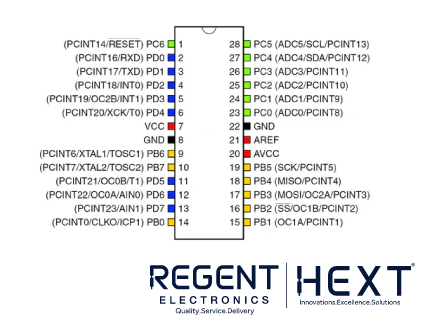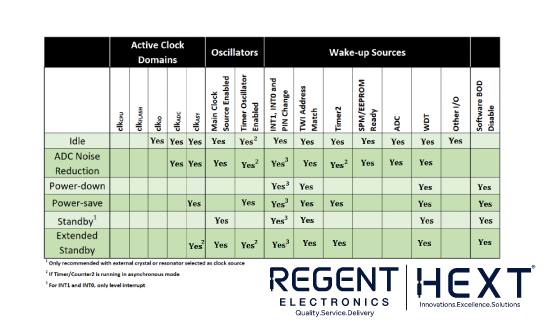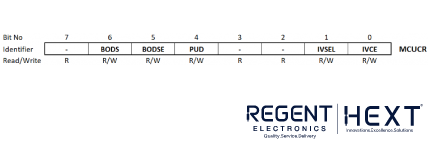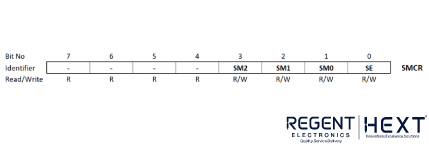
Maximizing Power Efficiency with Arduino Sleep Modes: A Guide to Save Power
Introduction: Saving Power in Your Arduino Projects
When working on Arduino projects, power consumption becomes a crucial consideration, especially in devices that need to run continuously over long periods without shutting down. To help address this challenge, sleep modes are integrated into most microcontrollers, including Arduino boards. These modes are designed to minimize power usage by turning off unnecessary components, allowing developers to design energy-efficient electronics.

In this blog, we’ll explore how to leverage Arduino’s sleep modes to save power in your projects. We’ll also demonstrate how to measure power consumption using an ammeter to see the benefits firsthand.
What Are Arduino Sleep Modes?
Arduino sleep modes, also known as power-save modes or standby modes, allow the microcontroller to stop or reduce the operation of unused components, significantly cutting down power consumption. These modes are especially useful when you want to preserve battery life in battery-powered Arduino projects such as IoT devices, remote sensors, or wearables.
Arduino boards, such as the Arduino UNO, Arduino Nano, and Arduino Pro Mini, use the ATmega328P microcontroller, which has built-in brown-out detection (BOD). This feature ensures that the microcontroller operates properly even when the supply voltage drops below a critical threshold during sleep mode.
ATmega328P Sleep Modes
The ATmega328P provides six different sleep modes. Each mode allows various system functions to be powered down or kept active, depending on the needs of the application. Let’s review each sleep mode and how it impacts power consumption.
| Sleep Mode | Description | Wake-up Source |
| Idle Mode | A light sleep mode where the system clock continues running. The microcontroller can be woken by external interrupts or changes in I/O pins. | External Interrupts |
| ADC Noise Reduction | Reduces noise in analog-to-digital conversion by keeping the ADC active while turning off other components. | External Interrupts |
| Power-down Mode | The most energy-efficient mode. Only external interrupts, I2C, or the watchdog timer can wake up the device. | External Interrupts, I2C, Watchdog Timer |
| Power-save Mode | Similar to power-down but allows Timer2 to remain active, which can be useful for timing functions. | Timer2 (external clock) |
| Stand-by Mode | The system clock stays active for quick wake-ups. Suitable for applications needing rapid wake times. | External Interrupts |
| Extended Standby Mode | A variation of stand-by mode where Timer2 is active, keeping the system responsive. | Timer2 |

How to Activate Arduino Sleep Modes
To activate sleep modes on your Arduino board, you’ll need to use the Sleep Mode Control Register (SMCR). This register lets you set the appropriate sleep mode using SM0… SM2 bits and enable sleep with the SE (Sleep Enable) bit.

For finer control, the Power Reduction Register (PRR) allows you to turn off specific components manually, further reducing power consumption when they are not needed.
Reducing Power Consumption with Power Reduction Register (PRR)

The Power Reduction Register is a key tool to fine-tune power efficiency. By setting specific bits in the PRR, you can disable certain components to reduce the overall power usage of your Arduino. Here’s a quick look at the components that can be powered down:
- PRTWI: Turns off the I2C interface.
- PRTIM2: Disables Timer2 in synchronous mode.
- PRTIM0/PRTIM1: Turns off Timers 0 and 1.
- PRSPI: Disables the SPI interface.
- PRUSART0: Powers down the serial port (RX/TX).
- PRADC: Turns off the A/D converter.
What is BOD (Brown-out Detection)?
BOD (Brown-out Detection) helps protect your microcontroller from unstable behavior when the supply voltage drops below a critical threshold. In power-sensitive projects, disabling BOD can save energy. You can control this feature via the MCU Control Register (MCUCR) on the ATmega328P, especially in low-power variants (like the ATmega328P-P).
Additional Power-saving Techniques
Besides using sleep modes, there are several other strategies you can implement to further reduce power consumption in your Arduino projects:
- Lowering the Clock Frequency: The microcontroller consumes less power when running at a lower clock frequency. For continuous operation, reducing the frequency can significantly save power.
- Reducing the Operating Voltage: Lowering the voltage (for example, from 5V to 3.3V) reduces parasitic capacitances and leakage currents, which in turn lowers overall power consumption. In power-down mode, this can decrease current usage from 0.15mA to 0.12mA.
Wake-up Methods
To bring your Arduino out of sleep mode, you can use various wake-up sources based on your project requirements:
- Timer2: For timed wake-ups.
- External Interrupts: To trigger a wake-up from a sensor or button press.
- Watchdog Timer: To automatically wake up after a specified time period.
Conclusion: Save Power with Arduino Sleep Modes
By properly utilizing sleep modes on your Arduino, you can significantly reduce power consumption, extend the lifespan of your batteries, and create more energy-efficient projects. Whether you’re working with battery-powered devices or creating low-power sensors, these techniques are essential for ensuring optimal performance without unnecessary energy drain.
For more tips on saving power in your Arduino projects, or to find power-efficient components for your next design, visit Regent Electronics—your go-to source for quality electronic components.
